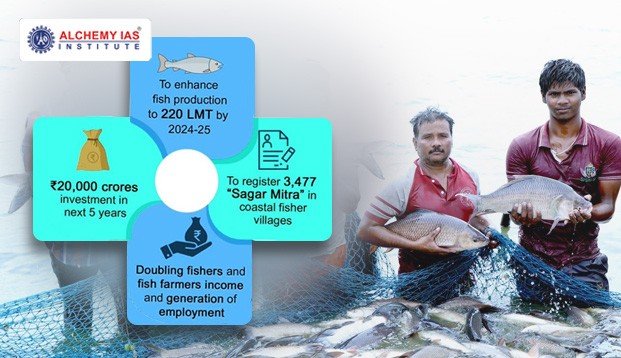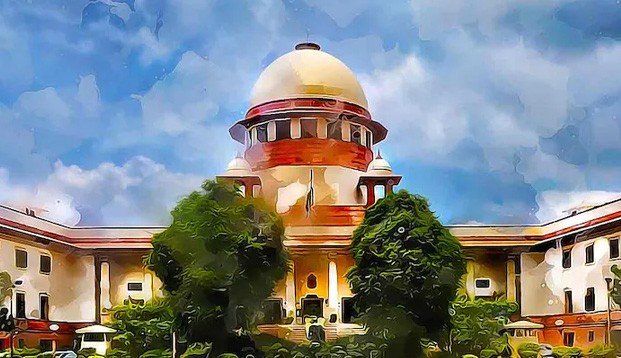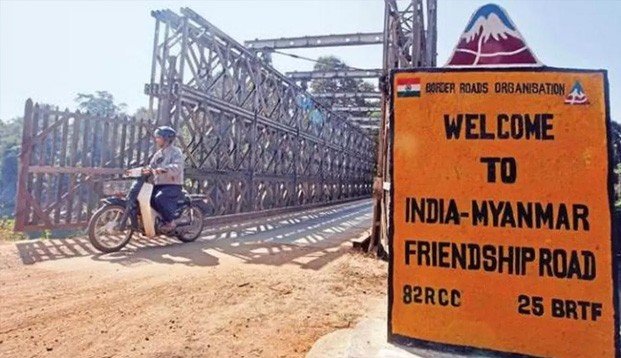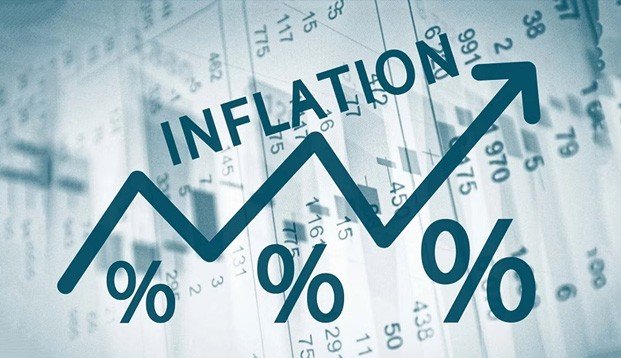The news analysis is prepared based on The Hindu‘s Delhi edition.
9th February, 2024 (Friday)
| CONTENT LIST | ||
| Topics | Syllabus | |
| 1 | Tenure of Rajya Sabha MP in India | GS.2: Indian Polity – Parliament |
| 2 | White Paper on Indian Economy | GS.3: Indian Economy: Public Finance |
| 3 | PM Matsya Sampada Yojana | GS.3: Indian Economy – Schemes in News |
| 4 | Kaladan Multi-Modal Transit Project | GS.2: IR: India – Myanmar Ties & Act East Policy |
| 5 | Identification of SCs and STs in India | GS.2: Social Justice – Vulnerable Sections |
| 6 | Free Movement Regime with Myanmar | GS.3: Security of India – Border Security |
| 7 | Repo Rate & Reverse Repo Rate | GS.3: Indian Economy – Banking Sector |
| 8 | Kyasanur Forest Disease | GS.3: Science – Disease in News |
TENURE OF RAJYA SABHA MP IN INDIA
Syllabus: GS.2: Indian Polity – Parliament
Why it’s in the News: Prime Minister Narendra Modi commends Manmohan Singh’s enduring impact on Indian democracy as he bids farewell to Singh, retiring along with 67 Rajya Sabha members.

About the Composition, Election & Tenure of Rajya Sabha MPs
- Composition
- Article 80 of the Constitution lays down the maximum strength of Rajya Sabha as 250 and current strength is 245, out of which 12 members are nominated by the President and 238 are representatives of the States and of the two Union Territories.
- The Fourth Schedule
- The Fourth Schedule to the Constitution provides for allocation of seats to the States and Union Territories in Rajya Sabha.
- Election
- The representatives of the States and of the Union Territories in the Rajya Sabha are elected by the method of indirect election by the elected members of the Legislative Assembly of that State and by the members of the Electoral College for that Union Territory, as the case may be, in accordance with the system of proportional representation by means of the single transferable vote.
- Tenure
- Rajya Sabha is a permanent House and is not subject to dissolution. However, one-third Members of Rajya Sabha retire after every second year.
- The Constitution has not fixed the term of office of members of the Rajya Sabha and left it to the Parliament. Accordingly, the Parliament in the Representation of the People Act (1951) provided that the term of office of a member of the Rajya Sabha shall be six years.
- A member elected in a bye-election remains member for the remainder of the term of the member who had resigned or died or disqualified to be member of the House under the Tenth Schedule.
WHITE PAPER ON INDIAN ECONOMY
Syllabus: GS.3: Indian Economy: Public Finance
Why it’s in the News: Finance Minister Nirmala Sitharaman delivered on her promise by presenting a White Paper on the economy in the Lok Sabha. She highlighted that the UPA’s 10-year rule led to economic losses, while the NDA government, under Narendra Modi, revived the economy from crisis and paralysis.
About White Paper on Indian Economy
- What is a White Paper:
- A White Paper is a government document that provides authoritative information or proposals on a specific issue or policy.
- It offers a detailed examination of the subject matter, backed by research and analysis.
- In this context, the White Paper on the Indian economy will focus on elucidating past economic challenges and their implications.
- Significance :
- The White Paper serves as a crucial tool for policymakers, economists, and stakeholders to understand past economic pitfalls and chart a course for recovery.
- It fosters transparency and accountability in governance by elucidating past shortcomings and outlining corrective measures.
- By promoting informed decision-making, the White Paper contributes to the formulation of effective economic policies conducive to long-term growth and development.
- Proposals and Objectives:
- The White Paper will analyze various aspects of economic management during the pre-2014 period, including fiscal policies, governance structures, and sectoral performance.
- It will highlight key proposals for addressing economic issues, such as enhancing regulatory frameworks, promoting investment, and fostering inclusive growth.
- Objectives include fostering transparency, accountability, and informed decision-making in economic governance.
PRADHAN MANTRI MATSYA SAMPADA YOJANA (PMMSY)
Syllabus: GS.3: Indian Economy – Schemes in News
Why it’s in the News: The Union Cabinet approved the Pradhan Mantri Matsya Kisan Samridhi Sah-Yojana, a sub-scheme of the Pradhan Mantri Matsya Sampada Yojana, for micro and small enterprises in the fisheries sector.

PM Matsya Sampada Yojana (PMMSY): Catalyzing a Blue Revolution
- In 2020, India’s fisheries sector faced a potential setback due to the COVID-19 pandemic amidst ongoing reforms.The launching of the Atmanirbhar Bharat package aimed to bolster the sector. This initiative injected ₹20,050 crore into the Pradhan Mantri Matsya Sampada Yojana (PMMSY), marking a historic investment and revitalizing the Indian fisheries industry.
- PMMSY stands as a pivotal initiative for the sustainable growth of India’s fisheries sector, infused with a ₹20,050 crore investments from 2020-21 to 2024-25, aligning with the Aatmanirbhar Bharat package.
- Ministry:
- Administered by the Ministry of Fisheries, Animal Husbandry, and Dairying.
- Objectives:
- Propel a blue revolution, fostering responsible development in India’s fisheries sector.
- Double the incomes of fishers and fish farmers.
- Curtail post-harvest losses from 20-25% to approximately 10%.
- Generate gainful employment opportunities in the fisheries sector.
- Implementation:
- Encompasses two components: Central Sector Scheme and Centrally Sponsored Scheme.
- The central sector scheme offers support for both beneficiary and non-beneficiary programs.
- General category beneficiaries receive 40% central assistance, while SC/ST/Women beneficiaries get 60%.
- Meanwhile, the central sponsored scheme provides varying levels of aid to different states and Union Territories. Specifically, the PMMSY, a component of the central sponsored scheme, targets three areas:
- Increasing production and productivity, developing infrastructure and post-harvest management, and enhancing fisheries management and regulatory frameworks.
- A robust implementation framework ensures effective planning and execution of PMMSY.
- Adopts a ‘Cluster or area-based approach’ for optimal outcomes, fostering seamless forward and backward linkages, providing end-to-end solutions.
KALADAN MULTI-MODAL TRANSIT PROJECT
Syllabus: GS.2: IR: India – Myanmar Ties – Act East Policy
Why it’s in the News: The Myanmar junta’s diminishing control amid widespread ethnic conflict is jeopardizing India’s Kaladan Multimodal Transit Project in Rakhine state. With Rs 3,200 crore invested since its 2008 inception, the project remains unfinished
About Kaladan Multi-Modal Transit Project
- Kaladan Multi-modal Transit Transport Project involving India and Myanmar is very important for connecting the North East and Myanmar.
- This is part of India’s ‘Act East policy’ connecting north eastern States and the ASEAN region.
- There is a framework agreement between India and Myanmar signed in 2008, to help in facilitating the implementation of the Kaladan Multimodal Transit Transport Project.
- India is also involved in developing the Sittwe Port in Myanmar which is expected to emerge as the most strategic overseas port for India and is located at the estuary of Kaladan River which is in the troubled Rakhine province of Myanmar.
- India has already constructed an inland water transport jetty at Sittwe and also a container terminal is expected to come up later.
IDENTIFICATION OF SCs AND STs IN INDIA
Syllabus: GS.2: Social Justice – Vulnerable Sections
Why it’s in the News: Supreme Court ruled that states can prioritize reservation benefits for the most marginalized groups without interfering with Parliament’s authority over Scheduled Castes or Scheduled Tribes on the Presidential list.

Identification of Scheduled Castes and Scheduled Tribes in India
- Pre-Independence Identification
- Prior to independence, the identification of Scheduled Castes (SCs) and Scheduled Tribes (STs) in India was initiated through the 1931 census conducted by the British government.
- This data formed the basis for the Government of India Act of 1935.
- The act, which came into effect in 1937, incorporated reservations for the “Depressed Classes,” a term later replaced by “Scheduled Castes.”
- Concurrently, Scheduled Tribes were identified as isolated tribes or communities that did not adhere to mainstream religions.
- The 1935 legislation categorized these groups, including Denotified Tribes, criminal tribes, and forest dwellers, among others.
- By 1937, affirmative action rights and political representation were granted to both sections.
- Constitutional Provisions
- The Constitution of India, under Article 341(1), empowers the President, in consultation with the Governor, to specify castes, races, tribes, or groups as Scheduled Castes.
- Consequently, the President issued notifications, such as the ‘Constitution (Scheduled Castes) Order-1950’ and the ‘Scheduled Castes and Scheduled Tribes List (Modification) Order-1956.’
- Additionally, Article 341(2) grants Parliament the authority to amend the list of Scheduled Castes.
- Presidential Order of 1950
- The Constitution (Scheduled Castes) Order, 1950, established a comprehensive list of castes and tribes, laying down specific criteria for their inclusion.
- However, the identification of Scheduled Tribes faced challenges, especially post-partition, due to their geographical isolation.
- Consequently, the Scheduled Tribe list underwent a complete update by 1958, encompassing 744 enlisted tribes.
- Conclusion
- The identification of Scheduled Castes and Scheduled Tribes in India has evolved through historical legislation and constitutional provisions.
- Beginning with the British-era categorization, it transitioned into constitutional frameworks post-independence, aimed at providing affirmative action and political representation to marginalized communities.
- Through successive orders and amendments, the Indian government has endeavored to ensure accurate identification and inclusion of these communities, reflecting a commitment to social justice and equity.
FREE MOVEMENT REGIME WITH MYANMAR
Syllabus: GS. 3: Security of India: Border Security
Why it’s in the News: The Union government has decided to scrap the Free Movement Regime (FMR) along the Myanmar border for the sake of the country’s internal security and to maintain the demographics of northeastern States

Understanding the India-Myanmar Border
- Geographical Overview:
- The India-Myanmar border spans over 1600 km, encompassing both land and maritime boundaries in the Bay of Bengal.
- It shares borders with four North-Eastern states: Arunachal Pradesh, Nagaland, Manipur, and Mizoram.
- The relationship between India and Myanmar is characterized by shared heritage, including religious, linguistic, and ethnic ties.
- Free Movement Regime (FMR) Explained
- Mutually Agreed Arrangement: The Free Movement Regime (FMR) allows tribes residing within 16 km of the border on either side to travel without a visa.
- Implementation and Significance: Instituted in 2018 under the Act East policy, the FMR aims to strengthen bilateral ties. Its inception was delayed in 2017 due to the Rohingya refugee crisis.
- Historical Context: The British-drawn border in 1826 separated people of shared ethnicity and culture without their consent, necessitating measures like the FMR to bridge divides.
- Rationale Behind the FMR
- Ethnic and Familial Ties: Communities along the border have deep-seated familial and ethnic connections, transcending geopolitical boundaries. Instances like the border cutting through villages and even homes highlight the human aspect of the border issue.
- Economic Implications: The FMR not only facilitates people-to-people contact but also fuels local trade and commerce. Cross-border exchanges are crucial for sustaining livelihoods in the region, given the historical precedent of trans-border commerce.
- Conclusion:
- The India-Myanmar border, beyond its geopolitical significance, embodies the intertwined lives and cultures of border communities.
- Initiatives like the Free Movement Regime not only foster socio-economic ties but also symbolize the shared aspirations for peace and prosperity.
- As border security measures evolve, it’s imperative to balance security imperatives with the preservation of cross-border connectivity.
- Moving forward, a holistic approach that addresses both security concerns and community needs will be pivotal in securing and integrating the India-Myanmar border region.
REPO RATE Vs REVERSE REPO RATE
Syllabus: GS.3: Indian Economy: Banking Sector
Why it’s in the News: The MPC maintains the policy repo rate at 6.5%, reaffirming its commitment to withdrawing accommodation to steer inflation towards the 4% target.

About Repo Rate & Reverse Repo Rate
- What is Repo Rate?
- The repo rate is the interest rate at which the central bank lends money to commercial banks for a brief period, usually one day.
- The term “repo” refers to “repurchase agreement,” where the borrowing bank agrees to repurchase the securities it sold to the central bank at a later date, often the next day, at a slightly higher price.
- The difference between the selling and repurchase prices represents the central bank’s earned interest.
- What is Reverse Repo Rate?
- The reverse repo rate is the interest rate at which the central bank borrows money from commercial banks and other financial institutions for a short period.
- It’s essentially the opposite of the repo rate.
- In a reverse repo transaction, the central bank acts as the borrower, while commercial banks and financial institutions act as lenders.
| DIFFERENCE BETWEEN REPO RATE AND REVERSE REPO RATE | ||
| Aspect | Repo Rate | Reverse Repo Rate |
| Definition | Rate at which central bank lends to commercial banks against securities, influencing borrowing and spending. | Rate at which central bank borrows from commercial banks, managing liquidity and interest rates. |
| Purpose | Control money supply, inflation, and stimulate economic activity. | Manage liquidity, absorb excess funds, and stabilize short-term rates. |
| Role | Central bank acts as lender. | Central bank acts as borrower. |
| Parties Involved | Central bank (lender) & Commercial banks (borrower). | Central bank (borrower) & Commercial banks (lender). |
| Impact on Economy | Lowering encourages borrowing, boosting spending and investment; Rising discourages spending. | Higher rates incentivize banks to park funds, reducing lending; Lower rates encourage lending, fostering economic activity. |
| Monetary Policy Tool | Implements monetary policy by influencing lending and economic activity. | Regulates liquidity and short-term rates, affecting borrowing costs. |
| Interest Earnings | Central bank earns interest on loans provided to banks. | Central bank pays interest on funds borrowed from banks. |
| Role in Financial Markets | Provides liquidity during financial stress. | Absorbs excess liquidity during high liquidity periods. |
| Role in Monetary Policy | Lowering is Expansionary; Rising is Contractionary. | Increasing is Contractionary; Decreasing is expansionary. |
KYASANUR FOREST DISEASE
Syllabus: GS.3: Environmental Pollution & Degradation
Why it’s in the News: Kyasanur Forest Disease (KFD), a viral infection, causes deaths, primarily in Karnataka’s Malnad region; 2 deaths reported this year.
About Kyasanur Forest Disease (KFD)
- Kyasanur Forest Disease (KFD), also known as monkey disease or monkey fever, is a zoonotic disease first reported in Karnataka’s Kyasanur Forest in 1957.
- The virus responsible for KFD has spread throughout the Western Ghats region, encompassing Maharashtra, Kerala, Tamil Nadu, and Goa.
- It is also referred to as monkey fever by locals.
- Symptoms and Transmission
- Symptoms of KFD include a sudden onset of high-grade fever, accompanied by prostration, nausea, vomiting, diarrhea, and occasionally neurological and hemorrhagic manifestations.
- The disease is primarily transmitted through the bite of ticks, with black-faced langur monkeys serving as significant hosts and contributors to the spread of the virus to humans.
- Treatment and Management
- Currently, there is no specific treatment available for KFD.
- However, prompt symptomatic and supportive therapy, including the maintenance of hydration, hemodynamic stability, and management of neurological symptoms, can significantly reduce morbidity and mortality associated with the disease.


